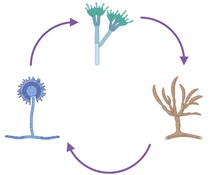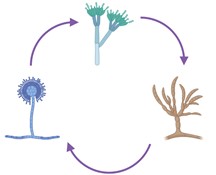Mycotoxins are toxic metabolites produced by certain fungal species under stress. Based on the type of fungus, mycotoxins can be produced when the plant is in the field or when grains are stored for extended periods or inappropriately.
Given the variability of mycotoxins’ chemical structure, knowing the kind of mycotoxins that affect the raw materials we use is crucial to establish the appropriate control and prevention strategies.
Each year, the prevalence of mycotoxins changes based on climate conditions, harvest time, storage period, etc. Just as prevalence changes, the concentrations of mycotoxins also vary. Consequently, the prevalence of aflatoxins has increased in the last few years (with an average of 75% in prevalence). In contrast, concentrations have simultaneously been declining to an average of 4/5 ppb.
Last Thursday, April 21, Vetanco launched a new edition of their BOOK DE MICOTOXINAS, PREVALENCIAS EN LATINOAMÉRICA (MYCOTOXINS BOOK, PREVALENCE IN LATIN AMERICA). This event showed the obtained results and had the presence of specialists from NEOGEN laboratory, who provide Vetanco with kits for their surveys, and Professor Carlos Mallmann, a leading expert on mycotoxins in Latin America, was also present. These experts made a presentation on the proper way of sampling for monitoring and analysis. They also explained the importance of synergism in mycotoxins.
Based on these surveys, the percentage of grains contaminated with one or more mycotoxins has been steady at an average of 84% from 2016 to 2020. However, the prevalence of mycotoxins showed an increase in positivity up to 94% during 2021.

But when we separately analyze the individual prevalence of each mycotoxin, we can see that the trends differ significantly each year. Therefore, aflatoxins had a major downfall in 2018/2019 but escalated to 78% during 2021. Fumonisins have been steady, with a prevalence exceeding 70% over the years, but dropped to 50% in 2021. T2 toxins have been absent with a prevalence under 10%. Lastly, DON showed the same trend as fumonisins (since both are produced by Fusarium fungus), having a decrease in 2018/2019 and a rise in the past year with a prevalence of 35%.
However, it is not enough to solely perform a prevalence analysis; a concentration analysis is also crucial. As a result, aflatoxins have a low average concentration in 2021 (5.4 ppb), but fumonisins and DON kept high concentrations on an average of 1600 ppb and 850 ppb, respectively.
Sadly, this is not the worst problem: although FUM and DON concentrations and prevalence are high, the projection aggravates when considering the synergic effect of these mycotoxins.
The percentages of co-contamination (percentage of samples contaminated with two or more mycotoxins) have increased over the last few years:

In 2021, we have noticed a 66% of samples were contaminated with two or more mycotoxins. This is extremely serious because mycotoxins have synergistic and additive effects. This means that regardless of low mycotoxin concentrations, their effects will intensify producing physiological alterations and production losses if two or more mycotoxins are present.

The interaction in this synergism between DON, fumonisins, and aflatoxins create an inflammatory and immunosuppressed state that reduces birds’ capacity to absorb nutrients and face bacterial challenges.
In a grains survey conducted in Argentina, the prevalence of aflatoxins and fumonisins was 74% and 71% respectively, whereas DON and zearalenone had 25% and 30% of prevalence, respectively. Yet, fumonisins and zearalenone were the mycotoxins that had a challenging concentration: 1500 and 120 ppb, respectively. While the average DON concentration was 700 ppb, which represents no issue in itself, having 66% of co-contaminations, the synergistic effects cause them to join the activity of the other mycotoxins and worsen the situation.
As a result, tools that have a broad spectrum of control on mycotoxins are more necessary than ever. These tools will not only eliminate aflatoxins and fumonisins but also will eradicate DON, which along with zearalenone are the hardest mycotoxins to kill using traditional mechanisms, such as the sequestrants. For that reason, multi-enzyme additives for mycotoxin removal are the best alternative to tackle these multiple challenges today.
Detoxa® Plus is a world-leading enzymatic mycotoxin deactivator. Detoxa® Plus was developed from the lysate of specific strains of Saccharomyces cerevisiae and has all the necessary enzymes for the biotransformation of fumonisins, trichothecenes, ochratoxins, and zearalenone. Therefore, it acts with a broad spectrum of action and high specificity. In addition to being specially manufactured for monogastric livestock, enzymes contained in Detoxa® Plus show their peak activity at low pH. In consequence, mycotoxins are removed in the first sections of the gastrointestinal tract before they find their way to the intestine where they could be absorbed.
Detoxa® Plus is the right alternative for those moments when we need a broad-spectrum tool that acts on non-polar mycotoxins, avoiding the losses resulting from multiple mycotoxins.


